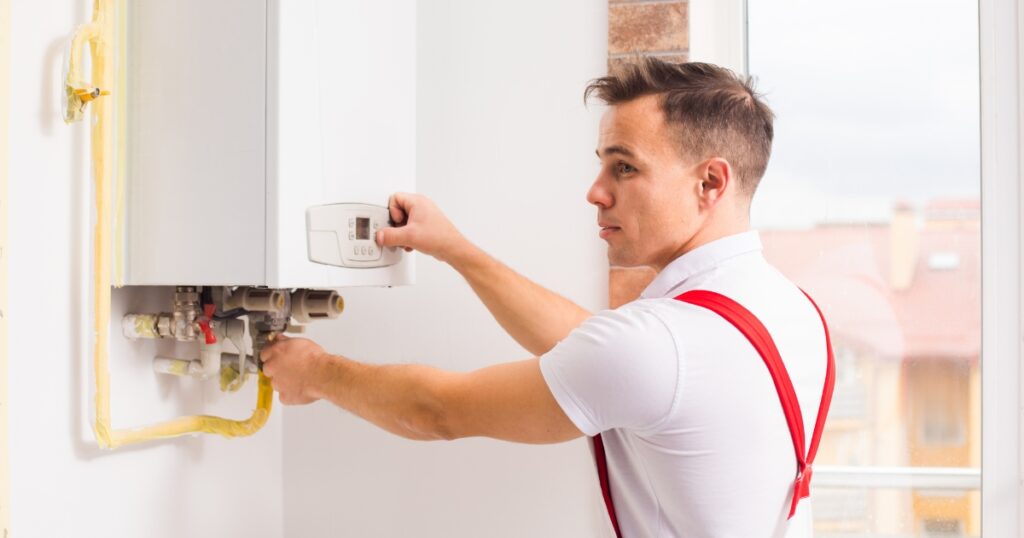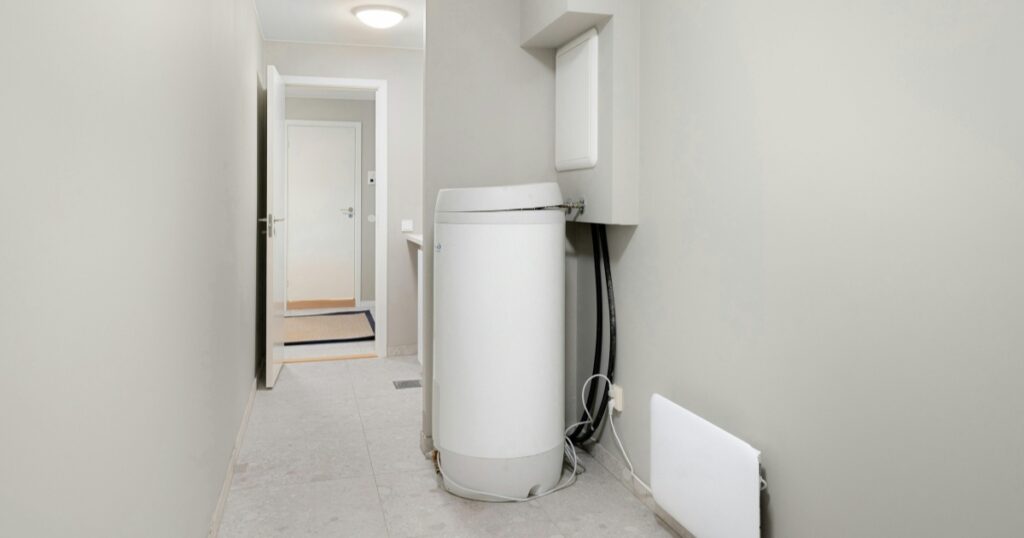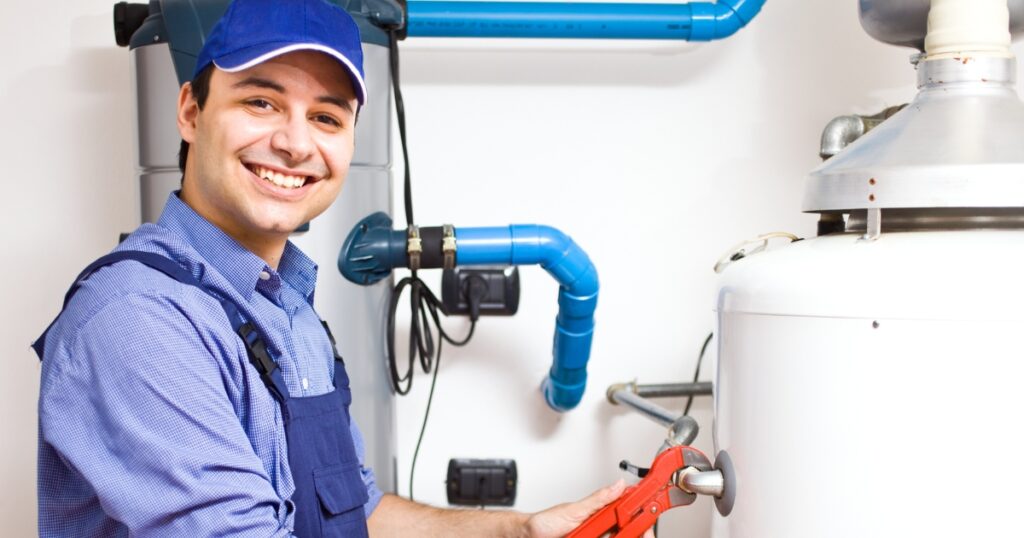Ah, the old cold shower surprise, hey? Just when you reckon you’re going to enjoy a nice warm splash, your hot water system throws in the towel. It’s a right pain, we know. Keeping on top of your hot water heater’s health isn’t just for peace of mind—it’s pretty much essential if you want to dodge those icy wake-up calls! So why not chuck a reminder in your calendar every six months to give that unit a good flush out? We’ve put together some ripper tips that’ll keep your water running hot and help avoid the hassle of unexpected chills.
Hang around with us and we’ll make sure those cosy showers aren’t just a stroke of luck.
Key Takeaways
- Regular maintenance such as flushing the tank, checking for leaks, and adjusting the temperature can significantly extend the lifespan of your water heater.
- Different types of water heaters require specific maintenance to maximise efficiency and longevity, with tasks such as cleaning filters for tankless systems and inspecting anode rods for storage tanks.
- Insulating the water heater and pipes helps minimise heat loss and reduce energy consumption, ultimately prolonging the system’s lifespan.
- Maintenance activities like testing the pressure relief valve every six months are vital to ensure the safe and efficient operation of your hot water system.
Understanding Different Types of Water Heaters
When it comes to water heaters, there are a few different types that you might come across. The most common ones include tankless water heaters, storage tank water heaters, and heat pump water heaters.

Each type has its own set of advantages and disadvantages, so it’s important to understand the differences before making a decision on which one is best for your home.
Tankless
We’re seeing more homes switch to tankless water heaters, and for good reason. These sleek units heat water on demand, which means they’re not constantly running like their tank-style cousins.
This feature alone makes them more energy efficient and can lead to cost savings on your utility bills. Without a storage tank, there’s no risk of leaks or bursts from a corroding container, cutting down potential disasters at home.
Maintaining these modern marvels involves checking the in-line screen filter for any buildup that might block the flow of water. We also advise having a professional service check annually to ensure everything’s functioning as it should be—this keeps performance top-notch and may prevent unexpected breakdowns.
It’s smart moves like these that keep our hot showers ready the moment we need them without wasting energy or money.
Storage tank
If you have a storage-tank water heater, regular maintenance is essential to ensure its longevity. Flushing the tank about twice a year can help eliminate sediment and mineral buildup, which in turn extends the lifespan of the water heater.
Additionally, checking the anode rod and inspecting for any leaks or drips are important steps in maintaining your storage tank water heater. By adhering to a proper maintenance schedule and promptly addressing any issues, you can maximise the efficiency and longevity of your storage tank water heater.
Proper care and attention will ensure that your storage tank water heater runs smoothly for years to come. Checking for leaks regularly, flushing the tank, and inspecting parts like the anode rod are vital steps in extending its lifespan.
Heat pump
Switching from a storage-tank water heater to a heat pump can significantly reduce energy consumption and extend the appliance’s lifespan. A heat pump works by transferring heat from one place to another, using electricity and refrigerant rather than generating heat directly, making it more energy-efficient.
By making the switch, homeowners can enjoy cost savings on their energy bills while also contributing to environmental sustainability. Furthermore, regular maintenance of the heat pump is essential for ensuring efficient performance and optimising its longevity.
Checking for leaks, cleaning filters, and scheduling professional servicing are key activities that help maintain an energy-efficient hot water system.
Regularly maintaining your heat pump hot water system will not only keep it running efficiently but also ensure its long-term functionality. Performing routine checks on the unit’s components like filters and evaporator coils will contribute to increased longevity and consistent high performance.

Importance of Regular Maintenance for Water Heaters
Regular maintenance is crucial for water heaters as it helps to extend their lifespan and can result in significant cost savings over time.
Extending lifespan
Flushing your water heater is crucial to remove sediment and minerals, extending its lifespan.
A professional inspection can help identify issues early on, preventing major problems and prolonging the appliance’s life.
Additionally, adding an expansion tank and installing a water softener are effective ways to maintain the efficiency and longevity of your hot water system.
Regularly maintaining the pressure relief valve, checking gas lines, and performing routine maintenance tasks can significantly extend the lifespan of your water heater. Flushing the tank every six months helps to keep it running efficiently and prevents mineral build-up that can decrease its lifespan.
Cost savings
Regular maintenance of your water heater can lead to significant cost savings in the long run. By preventing issues and extending the lifespan of your appliance, you can avoid costly repairs or early replacements.
Flushing the tank and checking valves can help maintain energy efficiency, reducing your monthly utility bills. Additionally, keeping up with maintenance tasks means you won’t have to invest in a new water heater before it’s necessary, saving you money on a premature replacement.
Proper care not only reduces the risk of expensive breakdowns but also optimises your water heater’s performance over time. As sediment buildup is minimised through regular flushing and cleaning, your water heater runs more efficiently, requiring less energy to heat the water – resulting in lower energy costs for the household.
Tips for Maintaining Your Water Heater
- Regularly drain and clean your water heater to remove sediment buildup and improve efficiency.
- Check for leaks and drips in the tank, as well as in the pipes and connections.
- Adjust the temperature settings to ensure energy-efficient operation without sacrificing hot water availability.
- Insulate your water heater and pipes to prevent heat loss and reduce energy consumption.
Drain and clean regularly
It’s important to drain and clean your water heater regularly to ensure efficient performance and extend its lifespan. Here are some tips on how to do it effectively:
- Turn off the power or gas supply to the water heater and let the water cool down.
- Connect a garden hose to the drain valve at the bottom of the tank and place the other end in a suitable drainage location.
- Open the pressure relief valve and then open the drain valve to allow the water to flow out.
- Once all the water has drained, close both valves and remove any sediment or buildup from the tank.
- Refill the tank with cold water, turn on the power or gas supply, and allow time for it to heat up.
Check for leaks and drips
Regularly check your water heater for any leaks or drips. If left unattended, even small leaks can lead to significant damage over time. It’s essential to inspect the following areas carefully:
- Check the relief valve at regular intervals to ensure it is not leaking.
- Examine the inlet and outlet connections for any signs of water leakage.
- Inspect the pressure relief valve and drain valve for any leaks or drips.
- Look underneath the water heater for any pooling water, which may indicate a leak.
- Monitor the area around the temperature and pressure relief valve for any signs of leakage.
Adjust the temperature
After checking for leaks and drips, another crucial aspect of water heater maintenance is adjusting the temperature. Here are some essential tips to help you with this task:
- Use caution when adjusting the temperature to prevent scalding.
- For optimal energy efficiency, set the thermostat to 120 degrees Fahrenheit.
- Lower temperatures can reduce the risk of mineral buildup and extend the lifespan of your water heater.
- If you have a heat pump water heater, ensure that the temperature setting aligns with manufacturer recommendations.
- Regularly monitor and adjust the temperature as needed depending on seasonal changes in water usage.
Insulate the heater and pipes
To maintain the efficient performance and longevity of your water heater, insulating the heater and pipes is crucial. Here are some steps to follow:
- Wrap the water heater in an insulating jacket to reduce heat loss.
- Insulate the first few feet of the hot and cold water pipes connected to the water heater to prevent heat loss as the water travels through them.
- Ensure that the insulation material is snugly fitted around the heater and pipes to maximise its effectiveness.
- Use pipe wrap or foam insulation sleeves to cover any exposed pipes in unheated areas such as basements or crawl spaces.
- Regularly check for any signs of wear or damage on the insulation and replace it if necessary.
Test the pressure relief valve
Testing the pressure relief valve is crucial to ensure it’s functioning properly. Here are the steps you should take:
- Locate the pressure relief valve on your water heater. It’s usually found near the top of the tank.
- Carefully lift and then lower the lever on the valve, allowing some water to flow through the discharge pipe.
- Listen for a gurgling sound, which indicates that water is flowing out freely and that the valve is working correctly.
- If no water flows through the discharge pipe or if it continues to drip once closed, contact a professional to repair or replace the valve.
- Test the pressure relief valve every six months to keep your water heater running safely and efficiently.
Stay alert to signs of failure
After testing the pressure relief valve, it’s important to stay alert to signs of failure. Here are some key indicators that your water heater may be experiencing issues:
- Notice any rust-coloured water coming from your hot water taps. This could indicate an internal rust problem within the tank.
- Listen for strange noises such as popping or cracking sounds, which could be a sign of sediment buildup in the tank.
- Keep an eye out for leaks around the water heater, particularly at the base of the unit or from any pipe connections.
- Pay attention to changes in water temperature or inconsistencies in heating performance, as this may signal a problem with the heating elements or thermostat.
- Look for visible signs of corrosion on the exterior of the water heater, which can indicate deterioration and potential failure.
Maintenance Schedule and Replacement Considerations
Setting a maintenance schedule is crucial to keeping your water heater in top condition. Be sure to keep track of when it was last serviced and when it’s due for the next one. Knowing when it’s time for a replacement is also important, so keep an eye out for signs of aging or wear and tear.
For more tips on how to care for your hot water heater, read our complete blog post now!
Setting a maintenance schedule
To maintain our water heater effectively, we need to set a regular maintenance schedule. Here are the key steps to follow:
- Check the manufacturer’s recommendations for maintenance frequency and tasks.
- Consider flushing the tank and checking valves at least once a year, as this can significantly extend the lifespan of your water heater.
- Create a calendar reminder or schedule automatic notifications on your phone to ensure you never miss a maintenance task.
- Keep a log of completed maintenance tasks to track the history of your water heater’s servicing.
- Plan ahead and schedule professional maintenance at least once every two years for a thorough inspection and tune-up.
Knowing when it’s time for a replacement
After setting a maintenance schedule, it’s crucial to be vigilant for signs indicating that your water heater may need replacement. Most water heaters have an average lifespan of 8 to 12 years, so if yours is approaching this age range, or if you’re experiencing frequent issues despite regular maintenance, it might be time to consider a replacement.
Be on the lookout for decreased hot water supply, strange noises coming from the unit, leaks around the tank or connections, and visible rust or corrosion. These are strong indicators that your water heater may need replacing soon.
Regularly maintaining your water heater can extend its lifespan significantly. However, knowing when it’s time for a replacement is equally important to avoid sudden breakdowns and costly repairs in the long run.
Tips to Extend Its Lifespan
Maintaining your hot water heater is essential to ensure efficient performance and increase its longevity. Regular maintenance tasks such as flushing the tank, checking for leaks, adjusting the temperature, and staying alert to signs of failure can significantly extend the lifespan of your water heater.
By following a consistent maintenance schedule and being aware of when it’s time for a replacement, you can maximise the lifespan of your hot water system in Australia. Remember that proper care and attention are key to keeping your water heater running smoothly for years to come.






